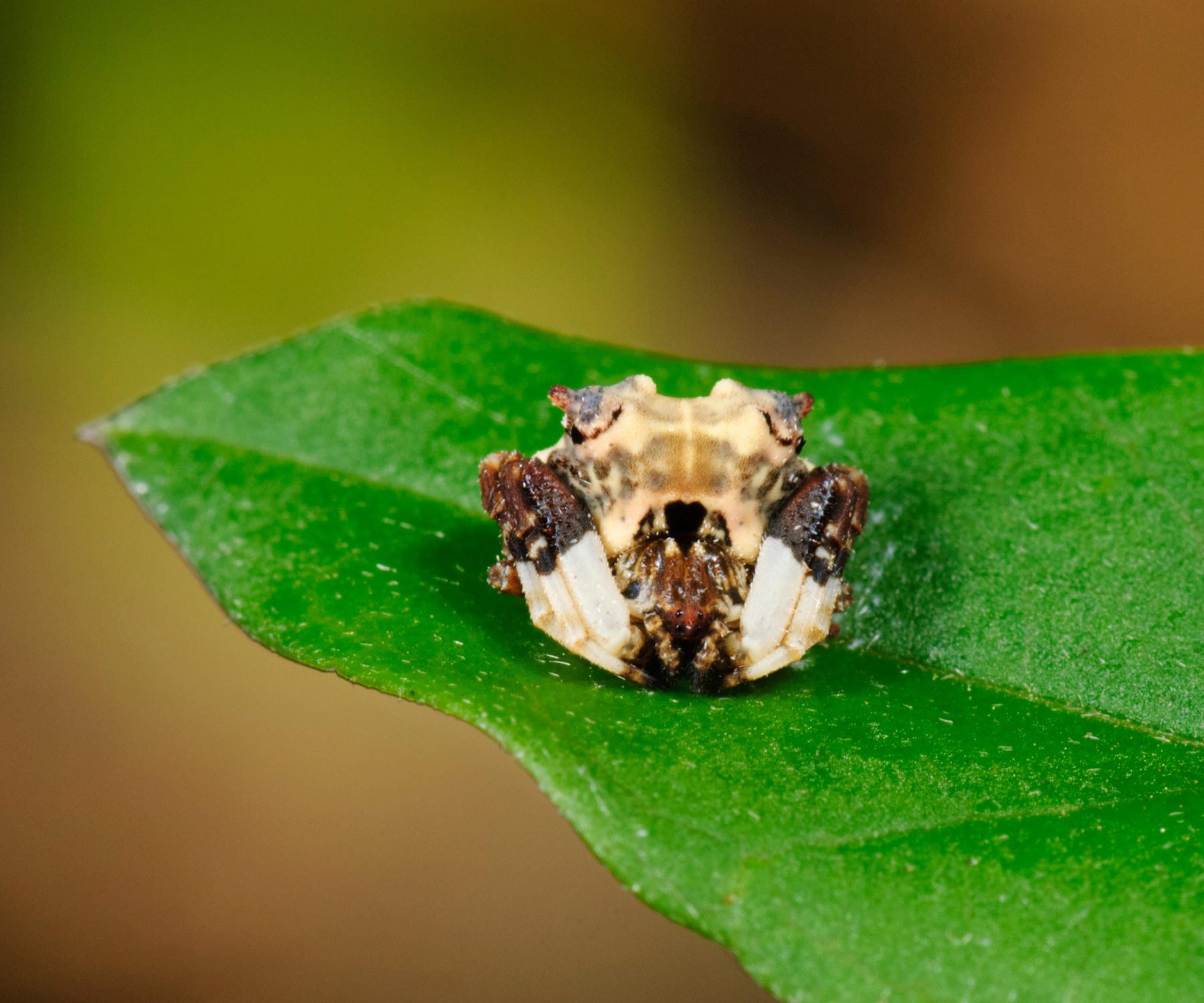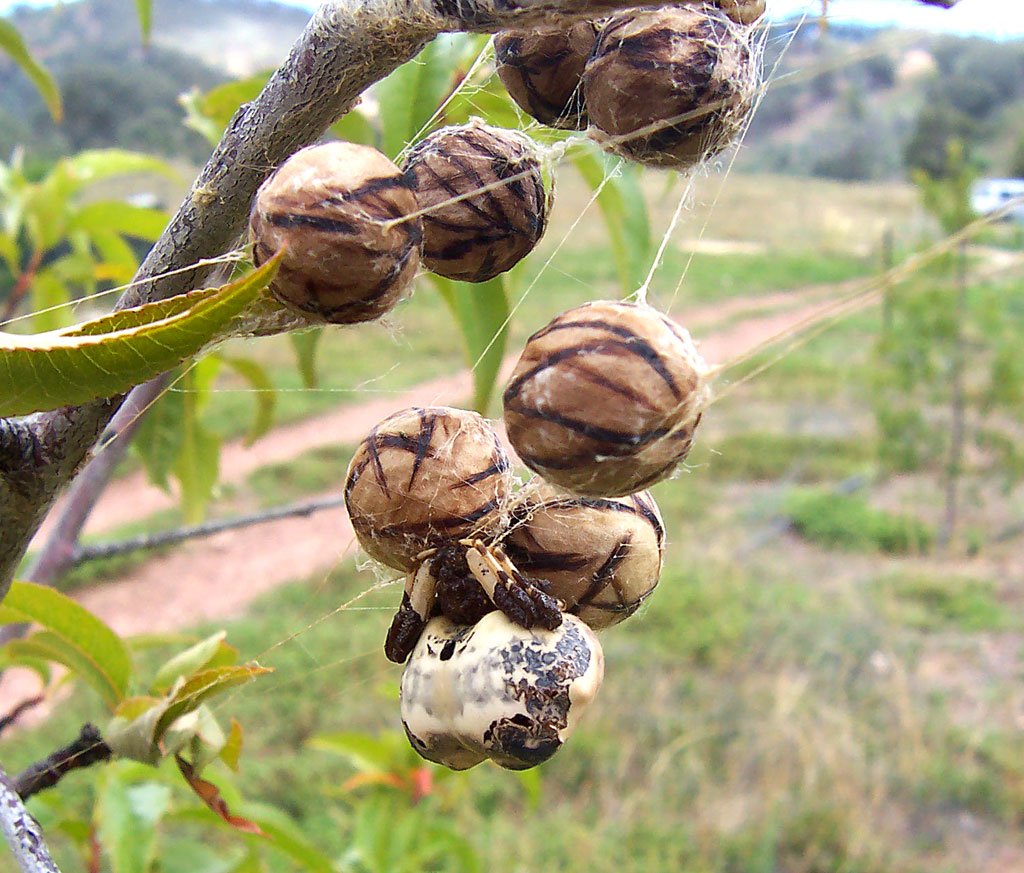The bird-dropping spider is the best

Bec Crew
Bec Crew

Bird-dropping spiders (Celaenia excavata) are found throughout eastern and southern Australia and have on rare occasions been sighted in central Australia and up near Uluru. The species is also found in New Zealand.
They’re common in suburban gardens, especially those with citrus or other types of orchards, but you’d be forgiven for missing them – their camouflage can work just as well on humans as it does on birds, their main predators.
While the males are absolutely tiny, with abdomens measuring only 2.5 mm long, the females grow to a sizeable 2 cm. These spiders are known for having a large, broad and triangular abdomen, which is decorated in splotches of white and brown, in a distinctly poop-like fashion.
They simply tuck their legs up against themself to really seal the deal:

Just like the wrap-around spider, there’s something oddly delightful about a spider trying its very best to be inconspicuous. Which, again, is not something I thought I’d ever say, but we live in strange times.
Bird-dropping spiders are very particular about their diet. They literally only eat one thing, and it’s not all that easy to acquire: male moths. But nature always finds a way, and in the bird-dropping spider’s case, that means pheromones.
This amazing spider has evolved to emit a chemical scent that smells just like the pheromones released by female moths to attract mates. Male moths approach the source of the scent and get snatched up.
It’s a worthy sacrifice, because bird-dropping spiders have their work cut out for them in raising their babies. Those big spheres engulfing the spider pictured at the top of the page are its giant egg sacs, which can be almost as big as the female spider herself.
A female spider can construct as many as 13 of these sacs, each containing more than 200 eggs. These egg sacs are strung together with web, and am I crazy, or does it look like a kind of dessert?

The female spider will guard her egg sacs fiercely. And by that I mean she will meekly wave a leg in the air. It’s very endearing:





